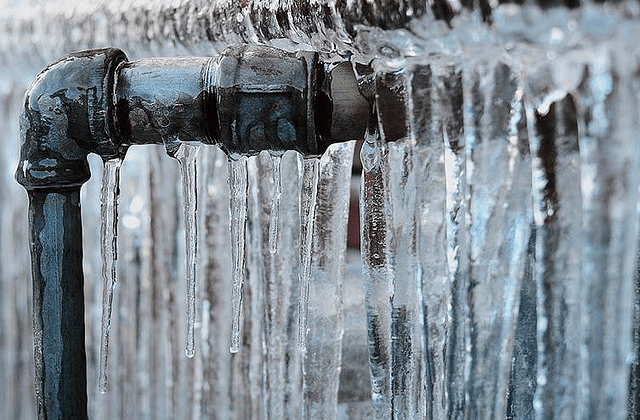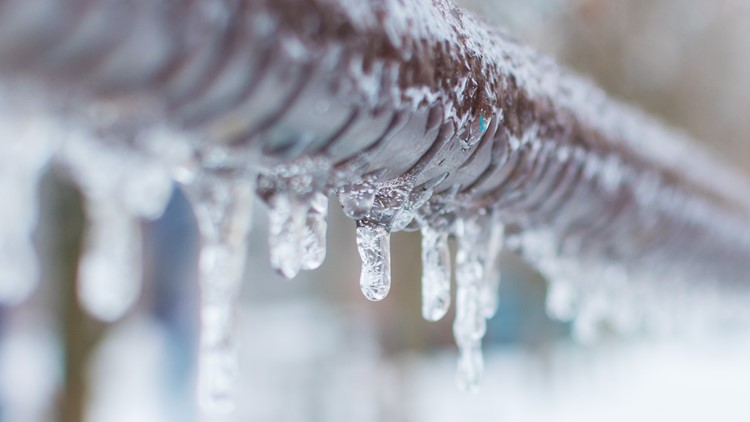How to Defend Plumbing System from Freezing: Key Tips
How to Defend Plumbing System from Freezing: Key Tips
Blog Article
We've discovered this great article involving Prevent Frozen Pipes directly below on the web and felt it made sense to talk about it with you over here.

Cold weather can wreak havoc on your plumbing, particularly by freezing pipes. Below's just how to stop it from taking place and what to do if it does.
Introduction
As temperature levels decline, the risk of frozen pipes rises, possibly resulting in expensive repair services and water damages. Recognizing just how to stop icy pipelines is important for property owners in cool environments.
Avoidance Tips
Protecting vulnerable pipes
Cover pipelines in insulation sleeves or make use of warmth tape to shield them from freezing temperatures. Focus on pipelines in unheated or exterior locations of the home.
Home heating techniques
Keep interior areas adequately warmed, particularly areas with plumbing. Open closet doors to allow warm air to flow around pipes under sinks.
How to identify icy pipelines
Look for decreased water circulation from faucets, uncommon odors or noises from pipelines, and noticeable frost on exposed pipelines.
Long-Term Solutions
Architectural modifications
Think about rerouting pipes far from outside wall surfaces or unheated locations. Add additional insulation to attic rooms, cellars, and crawl spaces.
Upgrading insulation
Invest in premium insulation for pipes, attics, and wall surfaces. Proper insulation assists keep constant temperature levels and decreases the danger of icy pipes.
Safeguarding Exterior Pipes
Yard pipes and exterior faucets
Disconnect and drain yard tubes prior to winter months. Install frost-proof spigots or cover outside faucets with shielded caps.
Recognizing Icy Pipelines
What causes pipelines to ice up?
Pipelines ice up when exposed to temperatures listed below 32 ° F (0 ° C) for prolonged periods. As water inside the pipes freezes, it broadens, taxing the pipeline wall surfaces and possibly creating them to break.
Threats and damages
Frozen pipes can cause water supply disturbances, residential property damages, and pricey repair work. Ruptured pipelines can flooding homes and create considerable architectural damages.
Indicators of Frozen Water Lines
Determining frozen pipes early can prevent them from breaking.
What to Do If Your Pipelines Freeze
Immediate actions to take
If you think frozen pipelines, keep faucets open up to soothe stress as the ice melts. Make use of a hairdryer or towels soaked in warm water to thaw pipes gradually.
Final thought
Preventing frozen pipelines needs aggressive steps and fast reactions. By recognizing the causes, indications, and preventive measures, home owners can protect their plumbing during cold weather.
5 Ways to Prevent Frozen Pipes
Drain Outdoor Faucets and Disconnect Hoses
First, close the shut-off valve that controls the flow of water in the pipe to your outdoor faucet. Then, head outside to disconnect and drain your hose and open the outdoor faucet to allow the water to completely drain out of the line. Turn off the faucet when done. Finally, head back to the shut-off valve and drain the remaining water inside the pipe into a bucket or container. Additionally, if you have a home irrigation system, you should consider hiring an expert to clear the system of water each year.
Insulate Pipes
One of the best and most cost-effective methods for preventing frozen water pipes is to wrap your pipes with insulation. This is especially important for areas in your home that aren’t exposed to heat, such as an attic. We suggest using foam sleeves, which can typically be found at your local hardware store.
Keep Heat Running at 65
Your pipes are located inside your walls, and the temperature there is much colder than the rest of the house. To prevent your pipes from freezing, The Insurance Information Institute suggests that you keep your home heated to at least 65 degrees, even when traveling. You may want to invest in smart devices that can keep an eye on the temperature in your home while you’re away.
Leave Water Dripping
Moving water — even a small trickle — can prevent ice from forming inside your pipes. When freezing temps are imminent, start a drip of water from all faucets that serve exposed pipes. Leaving a few faucets running will also help relieve pressure inside the pipes and help prevent a rupture if the water inside freezes.
Open Cupboard Doors
Warm your kitchen and bathroom pipes by opening cupboards and vanities. You should also leave your interior doors ajar to help warm air circulate evenly throughout your home.

As a keen person who reads on How to Prevent Your Pipes From Freezing, I assumed sharing that piece of content was smart. Sharing is caring. You never know, you may be helping someone out. We treasure reading our article about Prevent Frozen Pipes .
Book 24/7 Report this page